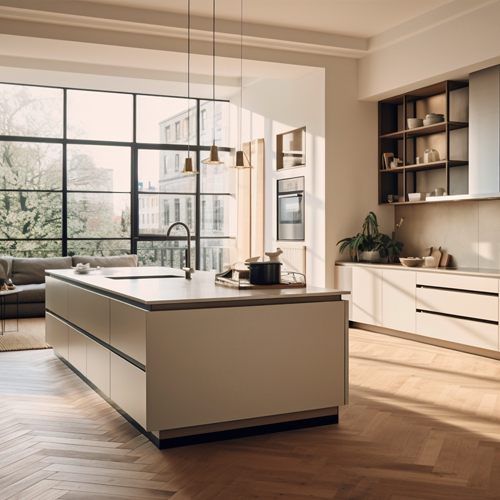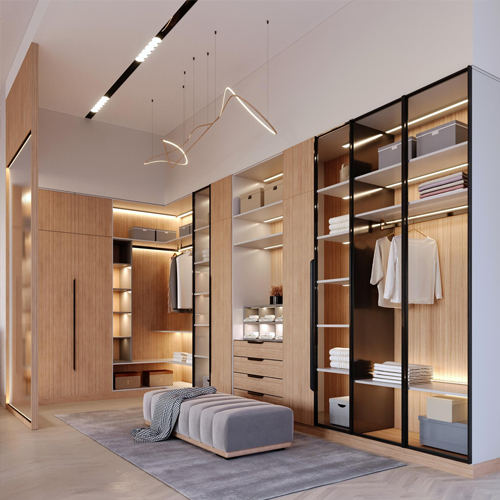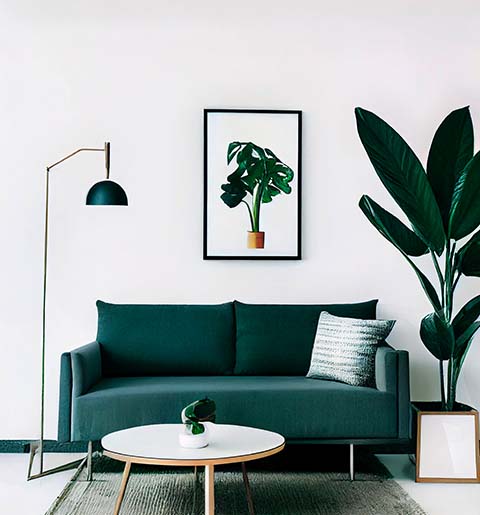The Psychology of Color in Interior Design: Choosing the Right Palette for Your Mood.
Have you ever walked into a room and instantly felt energized or calmed? Colors have a profound impact on our emotions and psychology, and this is especially true in the spaces we inhabit. Understanding the psychology of color in interior design allows you to create a home that not only looks beautiful but also fosters the mood and atmosphere you desire.
The Science Behind Color Perception
Our brains are wired to react to color. When light enters our eyes, it triggers a response in the hypothalamus, a part of the brain that regulates emotions and hormones. Different colors send different signals, influencing our moods and behaviors.
Colors and Their Emotional Associations:
Here’s a breakdown of some popular colors and their associated psychological effects:
Warm Colors:
- Red: Associated with energy, passion, and excitement. Use it sparingly in high-energy areas like accent walls in dining rooms or gyms.
- Orange: Evokes feelings of optimism, enthusiasm, and creativity. It’s a great choice for social spaces like living rooms or play areas.
- Yellow: Represents happiness, cheerfulness, and intellectual stimulation. It can brighten kitchens, home offices, or bathrooms.
Cool Colors:
- Blue: Creates a sense of calmness, peace, and relaxation. Ideal for bedrooms, bathrooms, or meditation spaces.
- Green: Associated with nature, growth, and harmony. It promotes feelings of balance and can be used in living rooms, bedrooms, or even kitchens.
- Purple: Represents luxury, creativity, and sophistication. Use it in accents or for a dramatic statement wall in a master bedroom or living room.
Neutrals:
Colors like white, beige, and gray offer a sense of serenity, cleanliness, and spaciousness. They can be used as a base palette and accented with bolder colors.
Choosing the Right Palette for Your Mood:
Now that you understand the emotions associated with different colors, you can use this knowledge to create a specific mood in each room of your home:
Living Room: As a space for socializing and relaxation, consider a warm and inviting palette. A combination of beige or light gray walls with pops of orange or yellow can create a cheerful and energetic atmosphere.
Bedroom: Your haven for rest and rejuvenation should evoke feelings of calm and tranquility. Opt for cool colors like soft blues, greens, or lavenders. To add depth, consider a darker accent wall in a similar cool tone.
Kitchen: This space should spark creativity and encourage energy. Light yellow walls with white cabinetry and stainless steel accents create a bright and cheerful atmosphere. You can also introduce pops of red for a touch of vibrancy.
Bathroom: Similar to the bedroom, a bathroom should promote relaxation. Soft greens, blues, or light grays are perfect choices. Consider incorporating natural elements like wood or stone accents for a spa-like feel.
Beyond the Basics:
While the primary colors set the overall mood, don’t forget the power of secondary and tertiary colors. Experiment with different shades and tones to create visual interest and depth. Here are some additional tips:
- Consider the size of the space: Lighter colors tend to make a room feel more spacious, while darker colors can create a more intimate atmosphere.
- Think about natural light: If your room receives a lot of natural light, you can opt for bolder colors. In rooms with less natural light, consider lighter palettes.
- Don’t be afraid to experiment: Create mood boards or use online visualization tools to experiment with different color combinations before committing.
Conclusion
Color is a powerful tool that can significantly impact the mood and atmosphere of your home. By understanding the psychology of color and considering your desired mood for each space, you can create a personalized haven that reflects your style and enhances your well-being. So, embrace the power of color and let your creativity flow!
For two decades, Pathways Creative has been on a mission to transform spaces and enrich lives. Since 2000, we’ve left our mark across 13 cities in Northern India, crafting environments that inspire and endure. We’re not just builders; we’re innovators who push boundaries and embrace the latest trends.



